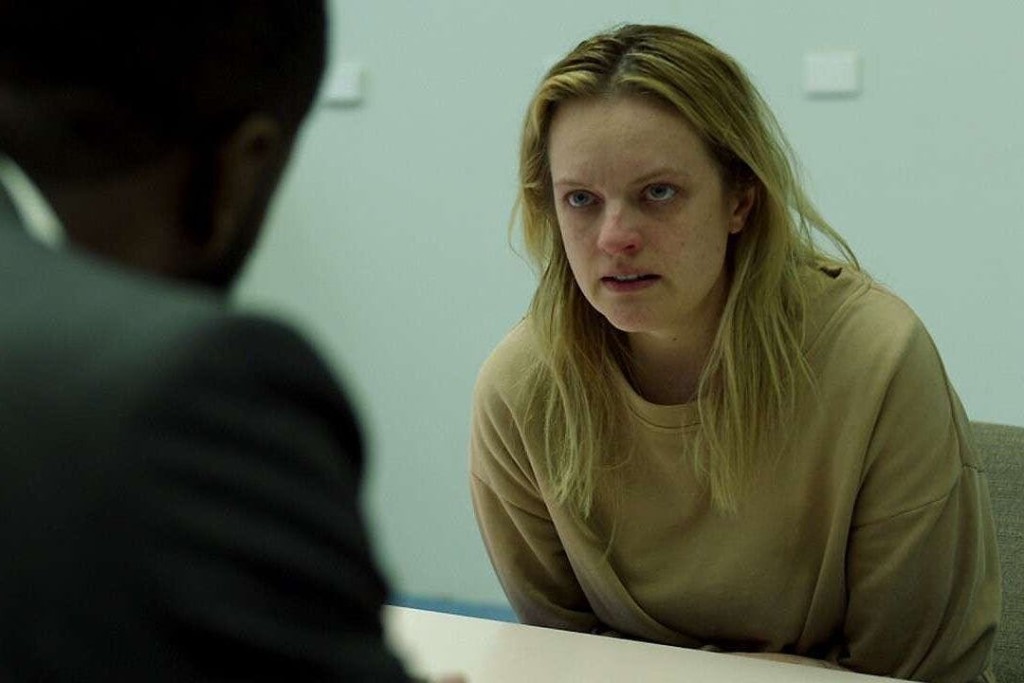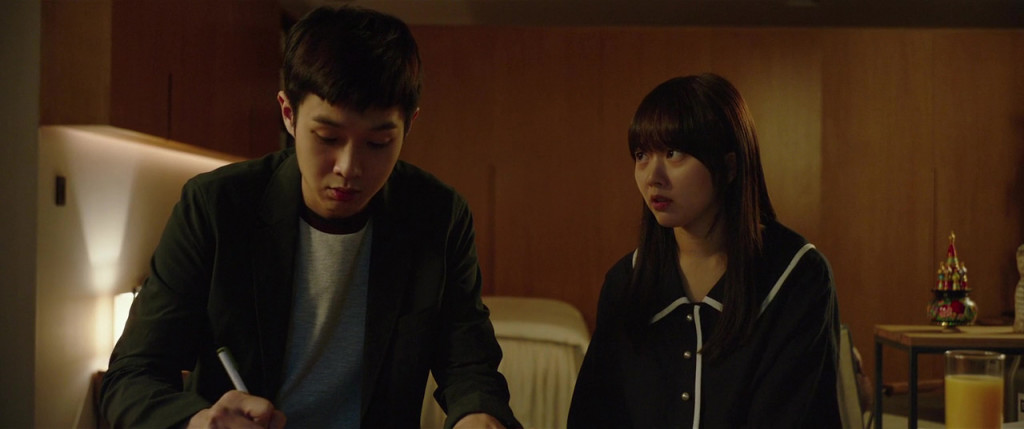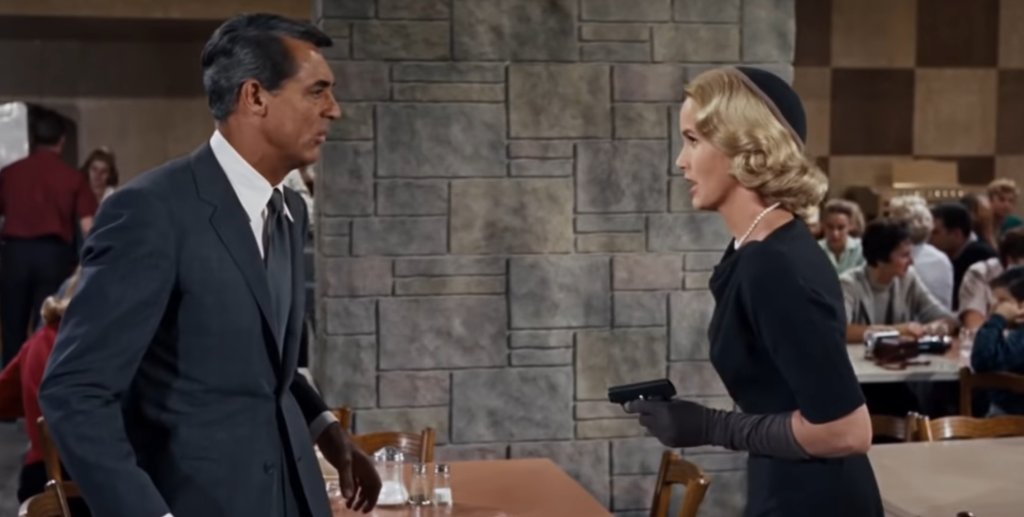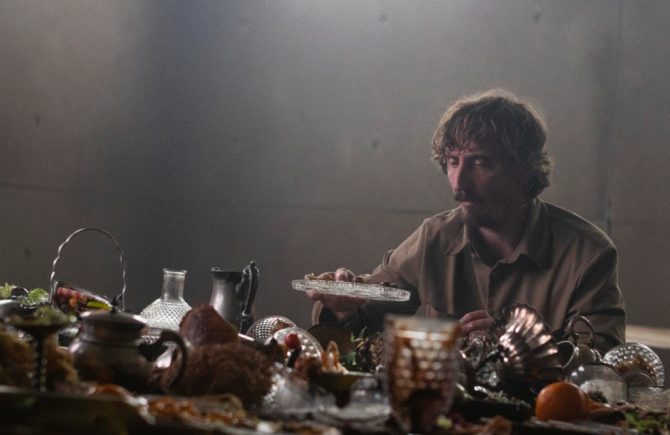It is Day 11 of the 2 Week Script Challenge.
I’ve asked you to write 8 pages a day. Which would mean, if you’ve been good, you will be writing pages 80 to 88 today.
Now here’s the good news if you’ve gotten this far. The last 30 pages of your script are the most structured of the entire screenplay. Your script is ending which means all you have to do is write a series of scenes that build to a climax.
If your script is between 100-110 pages, this will likely be where you introduce your LOWEST POINT. Your lowest point is where your heroes experience their biggest fall in the movie up to this moment. It looks as if there is no chance they will survive or succeed.
Notable LOWEST POINTS from films include Darth Vader striking Obi-Wan down in Star Wars.
There’s the house flooding scene in Parasite. A huge storm sweeps into their lower-than-ground-level home, making it unlivable.
The attempted suicide scene in The Invisible Man. Our heroine is in a mental hospital. It doesn’t look like there’s any way out except for death. And so that’s what she tries to do.
In A Quiet Place it’s when the dad is killed and the family is left to fend off the monsters on their own.
The lowest point scene is usually one of the more fun scenes to write because it’s such a big moment in the script. So this is always an exciting moment in the writing process for me. Well, anything where I’m able to leave the second act behind is an exciting moment.
From there, you’ll have your “dwell on what’s happened” sequence. This can last anywhere between 1-4 scenes depending on genre, pacing, and just the overall story you’re telling. We have to feel the effects of what just happened to your hero.
After that they have a rebirth, put together a plan to achieve their goal, and off they go to the climax. Easy, right?
Most stories have a goal to begin with, which makes the ending easy to figure out (the goal in Raiders is to get the Ark of the Covenant!). But sometimes scripts don’t have obvious goals. Romantic comedies are famous for that. It’s more about the relationship than the plot. This is why so many rom-coms end up at the airport with someone leaving. Whenever your ending isn’t built into your plot, you lean into the only other structure you know – which is scenarios that have worked in other movies.
But there’s still hope for you non-goal oriented screenplay writers. I learned this one from Steve Faber and Bob Fisher, the writers of Wedding Crashers. They said that they toiled over how to end their script for months until the obvious answer came to them. It’s a movie about weddings. The climax needs to be a wedding!
So look at your subject matter and that’s typically where you’re going to find your ending. If you’re writing about two chess players who fall in love, your ending shouldn’t contain any trips to the airport. It should probably take place at the national finals of the chess championships.
Very proud of everyone who’s made it this far.
KEEP. ON. WRITING!!!!
Okay, I’ve been reading through the comments and Day 10 progress can be divided into two lanes. One lane is brazenly charging forward, determined to get to their destination. And then there’s the defeatist lane, writers complaining that [insert first excuse here] and [insert second excuse here]. “It’s all so hard, you see!” “I’ve run out of ideas.” “I thought I was going to do this in my story then I realized I wasn’t and then I had to start over…”
Stop.
Just stop.
Stop treating writing like it’s a bully that picks on you at lunch every day.
Treat it like an opportunity.
I know I’ve been telling you to “just get the pages down.” But that doesn’t mean “Don’t try.” You should still be going into every section determined to do as well as you can in that moment.
One of the things that hurts us screenwriters is we exist in a medium that’s hyper-analyzed.
While critical analysis of other films is fun and can even be productive when you’re trying to get better, it’s the worst thing you can do when you’re writing something.
Because then you’re trying to achieve a standard that’s impossible. There isn’t a script out there that doesn’t have at least one element that can be aggressively criticized. So when you try and write a script that doesn’t have ANY weaknesses, you’re asking yourself to achieve something that’s never been done before.
This is the real reason you don’t want to write today.
This is the real reason you’re scared to give the script your all.
You can’t make it perfect. You can’t make it critic-proof. And if you can’t do that, why write at all?
I don’t mean to beat a dead horse but this stage of the writing should be all about creativity, imagination, exploration, trying stuff out. You are God. You’re building a universe. And that universe is going to be imperfect at first. BUT THAT’S OKAY.
The worst thing you can do is write from a place of fear. That’s not going to stoke the creative fire within you.
Here’s a tip that might help you out.
Writing is about momentum. When you’ve got it going, it feels easy. When you don’t, every scene feels like you’re lugging a cinder block to the top of Griffith Park.
Therefore, when you’ve written 4-5 bland scenes in a row, your momentum dwindles and you lose motivation.
Here’s a simple solution – UP THE STAKES OF THE SCENE
Even if a scene has a strong character goal and lots of conflict, it can still be bland. However, if you put something on the line (putting something on the line UPS THE STAKES) that scene can come alive.
Obviously, the more that’s on the line, the better the scene is going to play. But you can’t put the fate of the world on every scene. So you have to scale appropriately. Sometimes the stakes will be a 3. Sometimes they’ll be a 10. Where you run into trouble is when nothing is on the line at all. Zero stakes for 4-5 scenes in a row and of course you’re going to lose faith in your script.
Early in Parasite, the poor son comes over for his first day of tutoring at the upper class family’s home. The writer could’ve easily had the brother tutor the girl for the first session, flirt a little, and go home. But no, he has the mother sit in on the first session to see if he’s a good enough tutor for her daughter. SOMETHING IS ON THE LINE. If the mother isn’t impressed, he loses the job.
Now stop being a baby.
You are not allowed to exit the challenge.
You HAVE TO KEEP WRITING until the 14 days are over.
So, no, you’re not done.
No excuses!
Someone in the comments section asked, “What do we do if we’re way behind?”
I’ll tell you what you do. WRITE MORE.
One of the things it took me forever to figure out is that writing isn’t always supposed to be fun. Sometimes it’s work. And people don’t like to do work. But if you want to excel at screenwriting, you can’t just write when you feel like it. You have to learn how to write when you don’t feel like it.
I’ve been going on these long corona walks every day so that I don’t turn into a 400 pound block of cheese. The last couple of days, I didn’t want to go. Like I REALLY REALLY didn’t want to go. My legs were sore from previous walks. It’s Monday so mentally I don’t want to do anything. I have all the food in the world since I prepared for the end of it which sounded a lot better than a five mile marathon walk.
But I did it anyways because the alternative is worse.
It’s the same deal here. Sure, it’s more relaxing not to write when you don’t feel like it. Especially at this stage when you’re not close enough to the beginning of the script to work off excitement and you’re not close enough to the end to find motivation to pound out the pages.
But this isn’t about feeling good. It’s about getting pages written.
Guys, you’re living in a world where you’re forced to stay in. There’s literally no excuse for you not to write. So suck it up and write more.
Here’s a little screenwriting trick I learned when I was stuck on a script (or lacked motivation).
Do something unexpected with your story. Something you weren’t planning on.
Because if you’re struggling, you’re either in one of two mindsets. The first is that you don’t have any ideas. Or the second is that you’ve already mapped the story out and therefore feel like you’re transcribing notes. Neither of those is exciting.
But if you do something totally unexpected, even if it makes zero sense – actually ESPECIALLY if it makes zero sense – I guarantee you your creative juices are going to start flowing.
In one of the best Hitchcock movies ever made – North by Northwest – there’s a scene where our main character, Roger, is having an exposition-centric conversation with the female lead, Eve, in a packed restaurant.
The writer, Ernest Lehman, famously talked about how much trouble he was having with the scene. It was boring. He couldn’t make it work. Then a bolt of inspiration hit him. What if Eve shoots our hero? Right there in the middle of the restaurant! He credits that decision with invigorating the entire last part of the film.
The great thing about doing this is that if YOU’RE SURPRISED with something you wrote, the audience will DEFINITELY BE SURPRISED.
So go ahead and write a scene where you do something you’d normally NEVER DO. Don’t worry about if it makes perfect sense. That’s a problem for Future Rewrite Self to figure out. Right now we just need to get the script done.
So no matter how you’re feeling or how little motivation you have or how important it is that you watch all three of your favorite latest Youtube podcast episodes, you must KEEP. ON. WRITING.
And stop going to the In and Out drive-thru. I’d like to keep my food drives under two hours.
56 pages in. Who would’ve thought?
This weekend, I watched “The Platform.”
It’s a movie on Netflix with a clever premise. You agree to be a part of a 6-month experiment and, if you finish, they give you something important you need in life.
The catch is you don’t know what the experiment is until you’re in it.
So our hero, Goreng, wakes up in a concrete room with a roommate and a giant square hole in both the middle of the ceiling and the middle of the floor. We also notice a big number on the wall – 43. Before Goreng knows what’s going on, a giant table of food descends into the room and stops.
The giant table of food, however, is leftovers. Chicken bones and mostly eaten cake. Goreng watches in confusion as his roommate, the older conniving Trimagasi, ravenously attacks the leftovers.
What Goreng will soon learn is that the table of food comes down once a day, starting on the top floor with all the food. The table lowers every 60 seconds and each floor can eat as much food as they want during that time.
Goreng stares at the picked-over leftovers, the result of 42 previous floors of eating, and then asks the question all of us are wondering. “How many floors are there?” “200,” Trimagasi says. 200? If there’s only this much food on floor 43, how much reaches floor 100, floor 150, or floor 200? The thought is too scary to think about.
The story is obviously a metaphor for capitalism and it works well. Also, it’s a dream concept for a producer, which is why I got so jealous the second I saw it. A never-before-used high concept that takes place in a single location? It doesn’t get any better than that. You could shoot this movie for a quarter of a million dollars if you had to.
The movie seems to be getting a divisive reaction. The people who love it really love it. But when I tried to get my brother to watch it, he couldn’t make it past the ten minute mark. “It’s a guy in a room. Who cares?” He said. “I’m already bored.”
Because I have the 2-Week Screenplay Challenge on my mind, I imagined what it was like writing this movie and how it might be applicable to what all of you are dealing with.
My theory is that this was a first draft. It was a really good first draft – it probably had half-a-dozen polishes, otherwise known as “light rewrites” (change a scene here, alter a scene there). But you could feel the writer searching for interesting story elements as the story moved into its second half.
What really gave it away was the ending, which was the kind of ending writers write when they don’t have an ending. They convince themselves they’re being thoughtful and “challenging” the audience, when in reality they throw in some vague nonsensical finale and hope the audience does the work for them.
What I’ve found with endings is that you never nail them on the first draft. They alway take numerous drafts to figure out because endings are payoffs to setups. This requires you to go back to the beginning, set some things up, then pay them off in the climax. Which means starting a new draft so you can do that.
Then you learn your new setups aren’t perfect so you start to fine-tune them. And that takes more drafts.
And here’s what I’ve ultimately found. You can’t write a great second half until you know exactly how your movie ends. Because everything needs to be setting up that final sequence. If you’re not 100% clear on what that final sequence is, your second half is always going to be squishy.
All of this is to remind you that it’s okay to be messy right now. It’s okay, as you make your way to the climax, if none of the puzzle pieces are fitting together the way you want them to. That will come. I promise you, if you choose to keep writing this script after this draft, it will come.
The only thing you need to worry about right now is having fun. Don’t take this process so seriously or you’re going to hate yourself and want to give up.
And if The Platform truly was a first draft? It shows you what’s possible with a strong concept. You don’t need to be perfect. You just need to exploit as many cool things about your concept as possible. Get into your audiences’ heads. What do you think they would want from your concept? Give them that. I was curious about what the table looked like on the 200 level. They put our characters on the 200 floor later so we see that. That’s how to exploit your concept.
So keep writing. I want one of you to have a featured movie on Netflix. It’s not going to happen unless YOU. KEEP. WRITING.
48 pages in!
It’s likely that you are in one of two mindsets. You’re on that first draft adrenaline rush where you’re writing down anything your imagination can come up with, feeling like a young Tarantino in the process.
Or you’re freaking out about the fact that you don’t have nearly as much story as you thought you did. You’re a fraud. You don’t know how to write. Every scene you’ve written sucks.
The Writer’s Inner Critic absolutely LOVES this part of the process, the part where you doubt yourself. It gets to remind you just how terrible you are so it can ensure that you never put yourself on the line or attempt to do anything big with your life. This way you stay at home in that safe little bubble, your biggest task each day figuring out what to eat for dinner. Chic-fil-A or In and Out.
Here’s some good news.
No screenplay has ever been written IN THE HISTORY OF MANKIND that didn’t have at least five mental breakdowns from the writer, who was convinced that both a) this was the worst idea ever for a movie and b) they were a fool to think they could ever actually write it.
So if you’re feeling any of these things, you’re in good company.
Here’s what you have to remember. And it’s something I figured out through my own experiences.
With each draft, you realize that you can move stuff up. That big moment that happens on page 30? You could move that up to page 15. That thing that happens at the midpoint? That should actually be your first act break.
And then the next draft, it happens again. Your new midpoint sequence? It could probably be moved up to page 45.
It’s only after three or four drafts, when you’ve packed your script with a big solid game-changing moment every 15 pages, where you start to feel the power of your original vision. That’s where the movie becomes real in your head.
You’re nowhere close to that at the moment. You’re still trying to get a sense of what your story is about. And you’re doing that by writing eight pages a day. Those pages are like little notes to yourself about what your story can be.
So stop worrying if your script feels dumb right now. It SHOULD feel dumb right now. It’s the dumb version of your movie. The smart awesome version of your movie is several drafts away. But you can never reach that awesome version unless you first finish this one.
Ignore your inner critic and KEEP. ON. WRITING!!!!
P.S. I saw the craziest thing the other day. It was a line of 71 cars at the In and Out drive through in Culver City. I counted every one.






